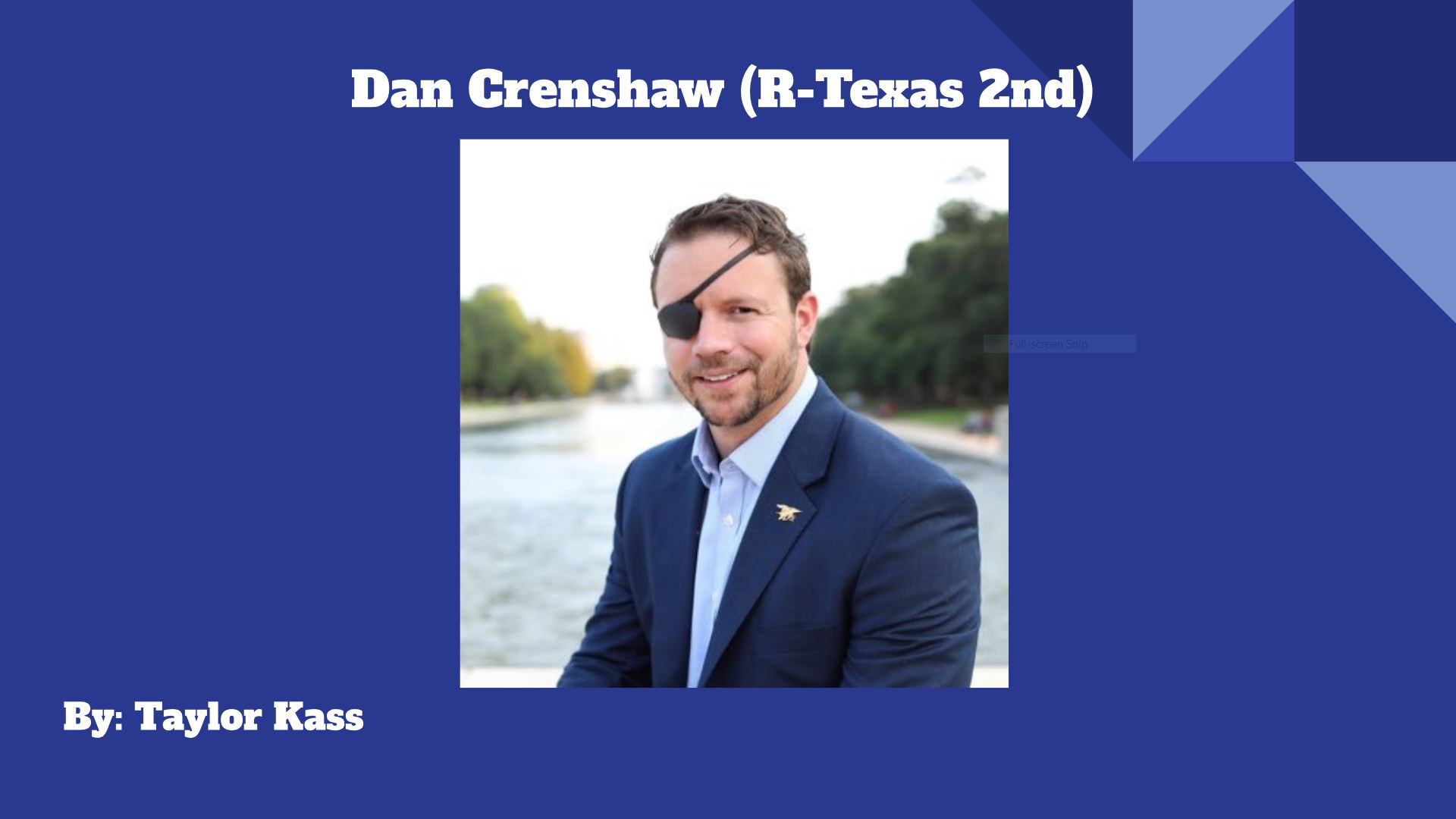
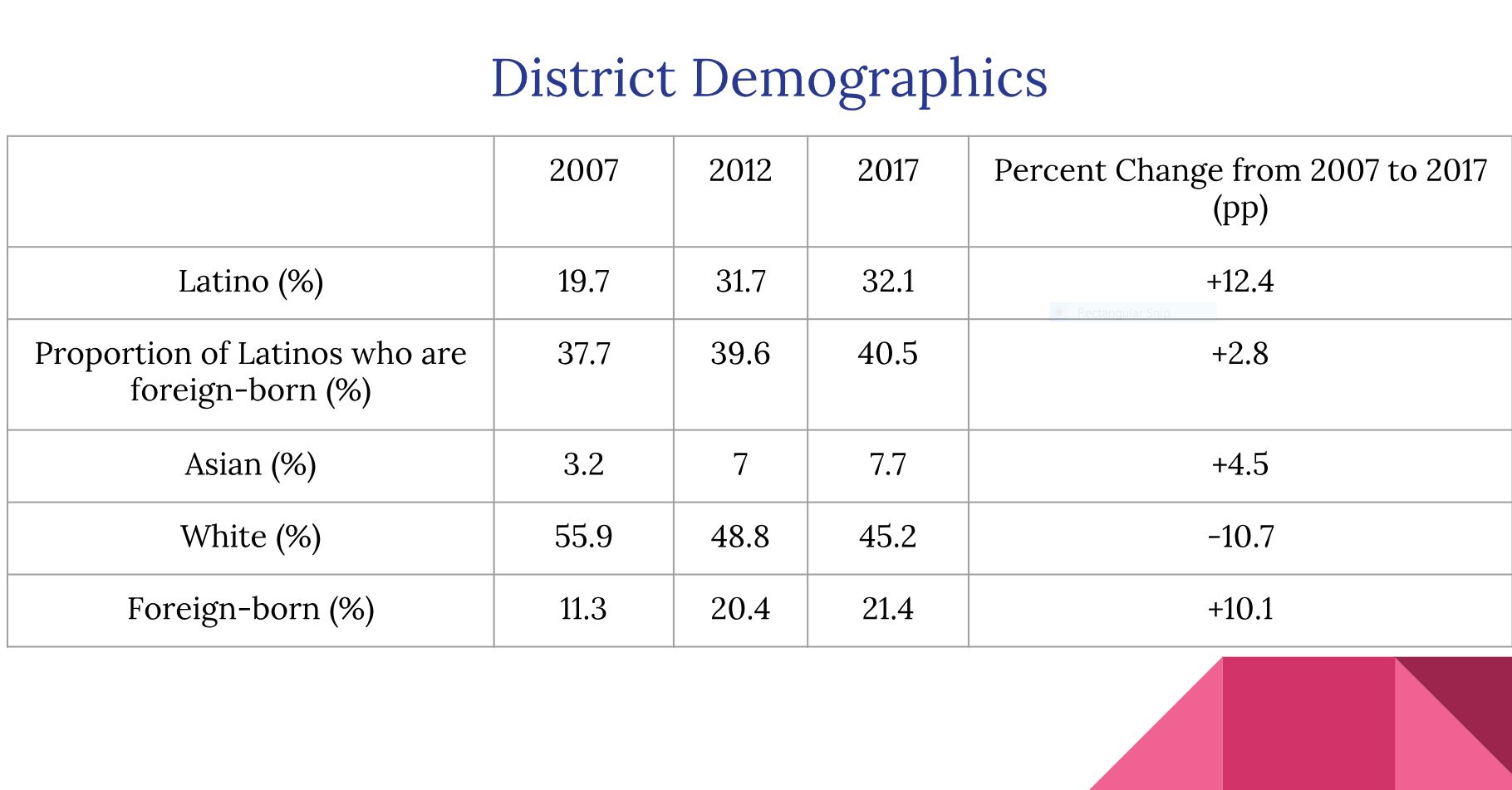
Demographics have changed a fair amount in Texas’s 2nd District. It is important to note, however, that congressional redistricting occurred in 2012 that eliminated parts of southeast Texas, which included larger African American and white populations, and added neighborhoods in Houston heavily populated by Latinos. These new geographic boundaries may influence the demographic changes noted. From 2007 to 2017, the Latino population increased from 19.7% to 32.1%, meaning that articles discussing how changing Latino demographics impacts local voting patterns will be relevant. The district also has a high and rising foreign-born population (21.7% in 2017, compared with 11.3% in 2007), as well as a high and rising proportion of Latinos who are immigrants (40.5% of all Latinos in 2017, compared with 37.7% in 2007), making articles discussing immigration policy and high volumes of immigrants in an area relevant to this presentation. Moreover, the high proportion of Latinos who are immigrants means this presentation will distinguish between articles discussing attitudes possessed by/toward this group of Latinos in particular. While the Asian population grew (a change from 3.2% in 2007 to 7.7% in 2017), the small overall size of Asians in the district meaning articles discussing the impact of a large Asian population will not hold much significance to this presentation. Finally, the non-Hispanic white population decrease from 55.9% in 2007 to 45.2% in 2017, meaning that articles discussing a declining white population in the context of rising minority populations (in this case, largely Latinos) will be relevant to the following discussion.
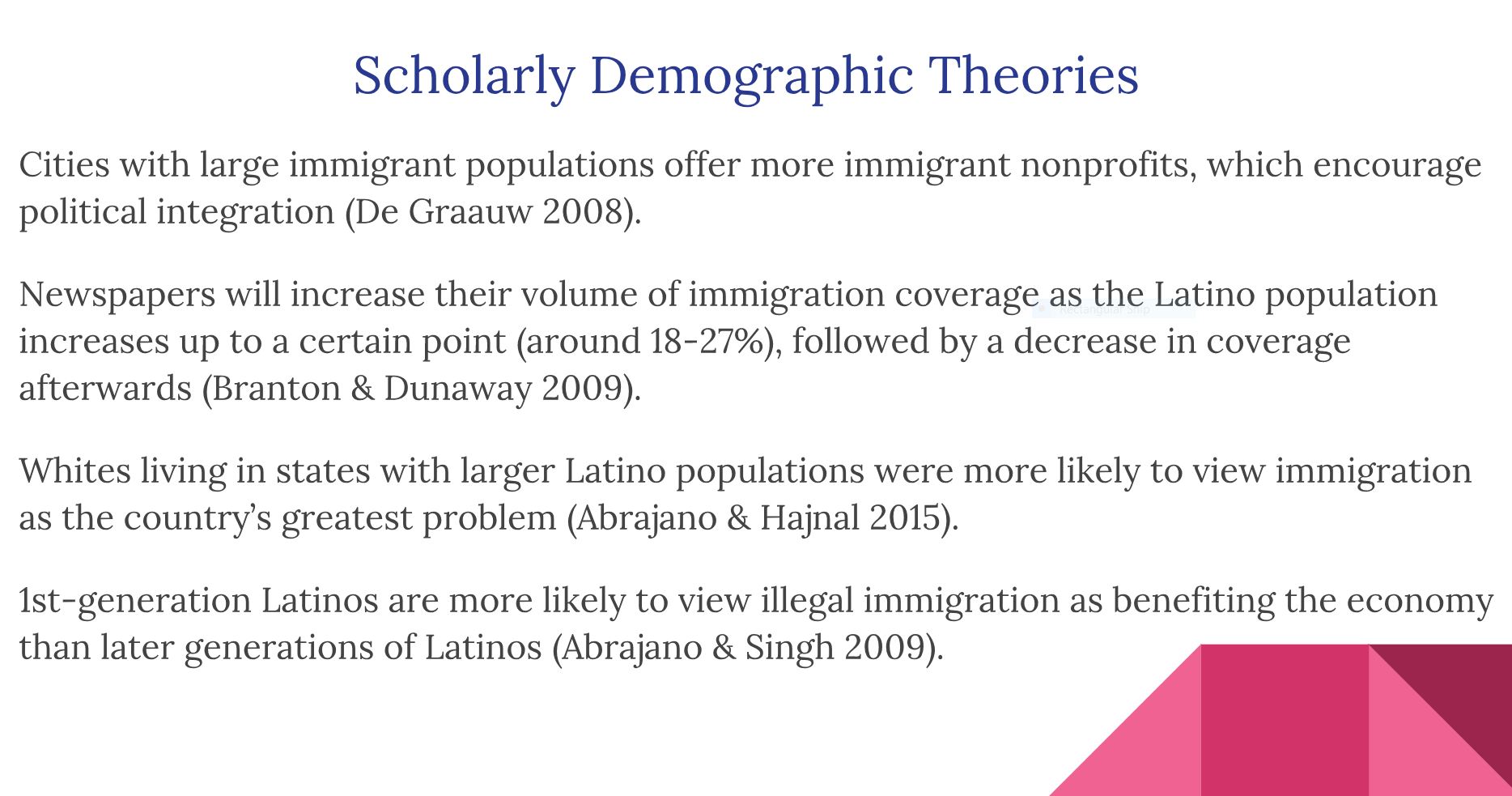
The scholarly theories in this presentation were selected based on their relevance to the 2nd District. De Graauw’s article was discussed due to the district containing western parts of Houston, America’s 4th largest city. Due to Houston’s population and its proximity to the southern border, it will likely be a “gateway city” for immigrants, meaning that many immigrant nonprofits will likely headquarters themselves there and advocate for immigrant integration into local politics and society. Branton and Dunaway’s piece was featured due to the rising Latino population in the district and to see how these changing demographics would change media incentives. A rising, but small Latino population would incentivize more coverage of immigration, as the issue would be of interest to the majority white population. However, after a certain threshold (around 18-27% Latino), media organizations view Latinos as potential consumers of media and decrease immigration coverage to not dissuade Latino viewers. Abrajano and Hajnal’s piece was included because of the large Latino population and large, but declining white population in the 2nd District. This theory predicts whites would view the large Latino population as a potential threat to white communities via economic competition, rising crime, competition for social services, and threats to white political power. Finally, Abrajano and Singh’s article was included due to the large number of foreign-born Latinos in the district. This theory predicts that native-born Latinos are more likely to take mainstream policy positions, causing them to view illegal immigration more negatively than immigrant Latinos who may be undocumented themselves or more closely relate to a shared immigrant experience with undocumented immigrants.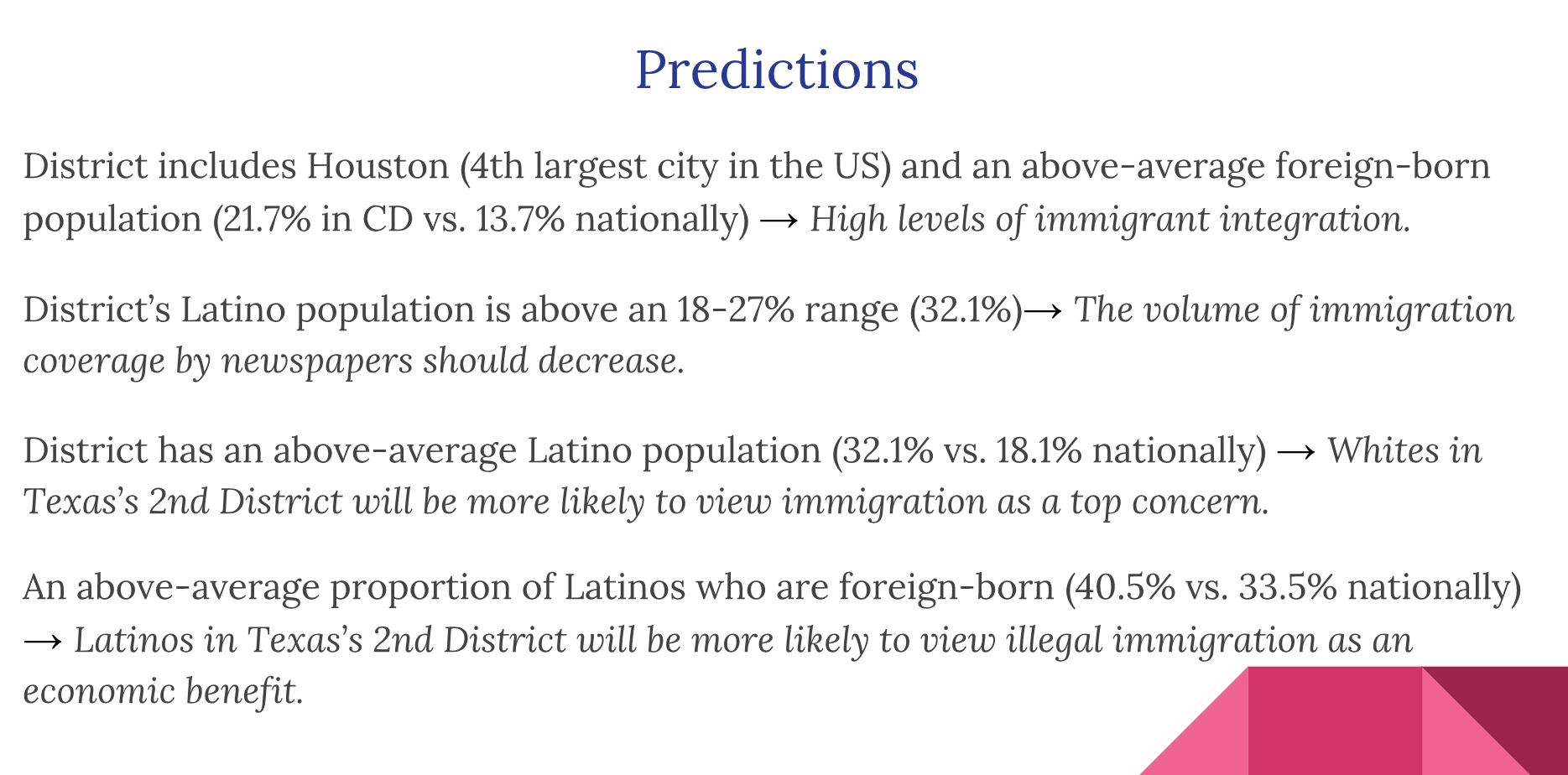
The district containing parts of Houston and possessing an immigrant population larger than the national average (21.7% vs. 13.7 nationally in 2017) predicts that immigrant nonprofits will be very active in the district and play a key role integrating immigrants into local politics (spreading awareness of local political issues, explaining how to register to vote, etc.). Since the Latino population is higher than the 18-27% threshold established by Branton and Dunaway (32.1% in 2017), newspapers in the 2nd District will contain less stories about immigration relative to areas with a Latino population slightly below the aforementioned threshold. Moreover, the high Latino population would also predict that whites in the 2nd District would view immigration as a top concern. The large foreign-born Latino population in the 2nd District (40.5% vs. 33.5% nationally in 2017) would predict that Latinos in the district would likely view illegal immigration as an economic benefit compared to Latinos in other districts.
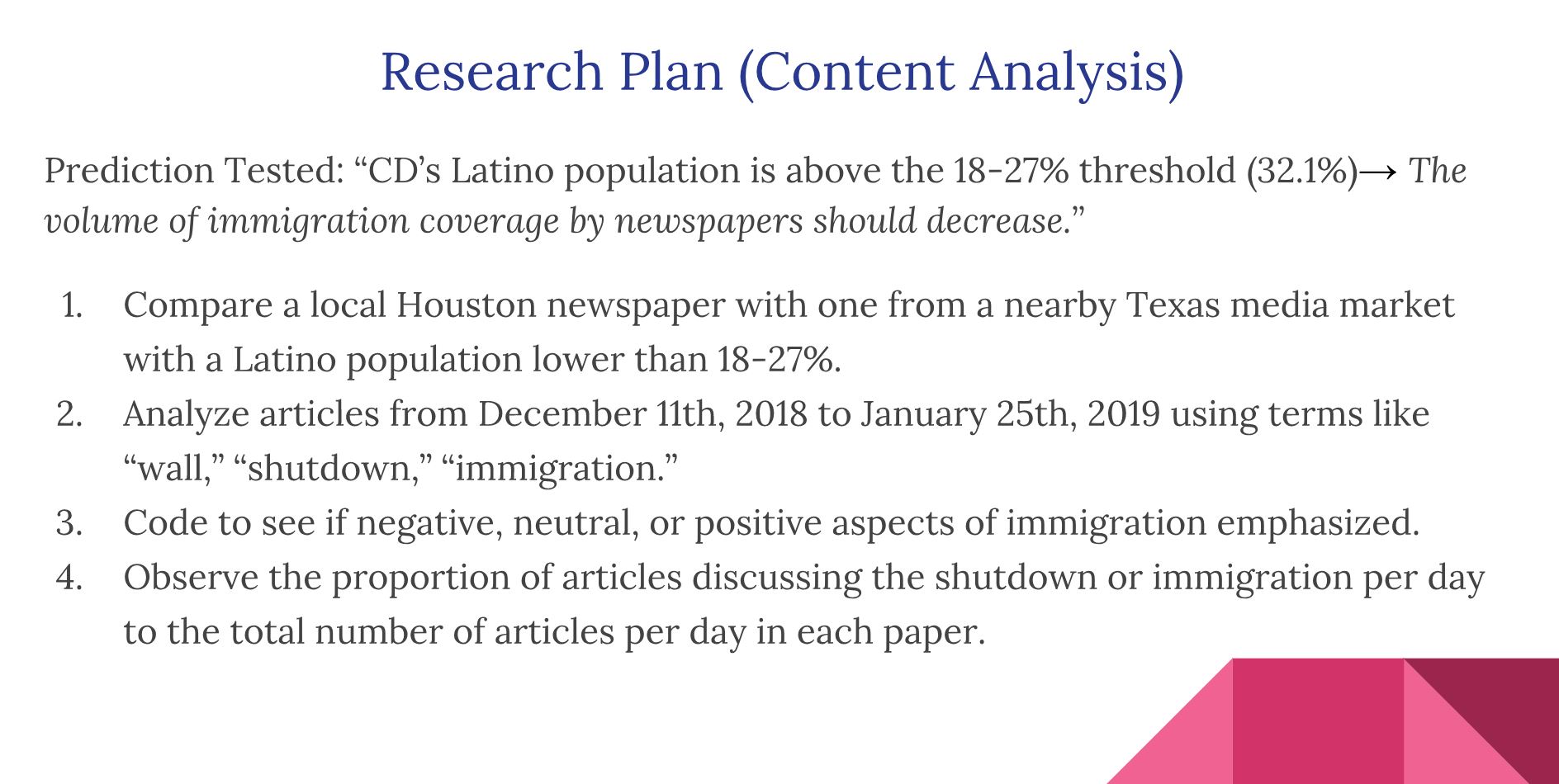
The prediction chosen to be tested is that since the 2nd District’s Latino population (32.1%) is larger than Branton and Dunaway’s 18-27% threshold, local newspapers will cover immigration stories less than areas with a Latino at or slightly below this threshold. This test will be conducted by first comparing a Houston-area newspaper to a newspaper in a nearby Texas market that has a Latino population at or below the threshold. Keeping the second market in Texas allows us to control for differences in state laws/rhetoric by politicians about immigration. Despite the government shutdown starting December 22nd, 2018, this study will start its analysis on December 11th, 2018 because of a high-profile argument between President Trump and Senate Minority Leader Chuck Schumer and then-House Minority Leader Nancy Pelosi that debated the amount of money appropriated to border security and likely started a spike in media coverage of immigration. This analysis will continue until January 25th, 2019, when the shutdown concluded, and include terms associated with the border security debate that caused the shutdown (“wall,” “shutdown,” “illegal immigration,” etc.). Moreover, positive aspects of immigration (reports of immigrants benefiting the country), neutral aspects (reports that do not declare a position) and negative aspects (crime stories, reports of economic competition with natives, social service use by undocumented immigrants, etc.) will be coded for in analysis of articles to see if a difference emerges between the two newspapers in tone. To assess the volume of stories, this analysis will observe the number of articles discussing immigration or the shutdown per day compared to the total number of articles published per day by each newspaper. Using proportions will be a better comparison because newspapers in Houston have a larger audience and likely more journalistic resources to print more stories than other areas of Texas.




